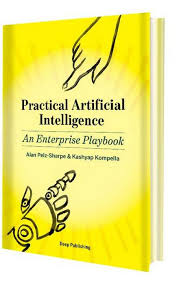Source: thehindubusinessline.com
The first question you need to consider is: what are the specific business drivers for your AI project?
In a broader context, the likelihood is that you are driven by a desire to gain or sustain a competitive advantage or to enter into new areas of business, stave off competitors, etc. Those are important drivers, but if everyone is getting into AI then they could arguably be table stakes. AI is a long-term investment and you need to think beyond the short term. Assume that your competitors and future competitors in adjacent markets are also at least considering the use of AI to keep parity. Reducing costs is a key driver – but just as important and just as overlooked is the fact that in the not too distant future both your suppliers and your customers will be expecting you to leverage AI. You need to think holistically about the short and long-term drivers, both for the internal and external factors that affect your business…
Unexpected Impact
The impact of AI on business processes gives us some cause for concern… Many seem to think this impact will come further down the line. In reality, even a small change in a process can have a big impact on a worker’s or department’s daily life. It depends on how you define a big impact. AI can have an immediate impact on the day-to-day work of individuals but it may take time for the results of all those small changes to have a big impact on the business as a whole. You need to plan for an immediate impact on your processes, as well as the greater impact AI will have in the mid and long term. Your processes will change, and hiccups and push backs not identified or mitigated against at the start could derail your project.
Finally, let’s consider your existing business operations; for example, your sales, HR, procurement, accounts, marketing processes, etc. To you these may seem to be straightforward and discreet activities. An AI system may not view these things as so clear cut; it may see more optimal ways of working, it may not respect the cultural silos that exist within your organization. Outside of very narrow, niche projects, the use of AI will likely have a knock-on impact, including potentially unexpected impacts, across your organization. Remember, when we said that you need to think holistically when planning the use of AI? Well, consider the chain effect of automating decision-making in one aspect of your business and how that may affect other areas of your business.
You must ask three essential questions:
1. What is the project? What value will it bring? What impact will it have?
2. What will the project involve in terms of changes to existing systems, processes and the organization?
3. What financial benefits will the project bring?
Costs to consider
Like IT projects, staff costs are a significant chunk of the overall costs. Because of a talent shortage in certain areas, the salaries for AI specialists can be higher than other IT roles. Also seemingly basic tasks like labeling of the training data can be a significant cost.
In AI projects, you also will have to budget for data and computing environment costs. Plus, if your teams need any external consulting support for opportunity identification, roadmap development, and working alongside the team, that cost also has to be considered. In contrast to normal Central Processing Units (CPU) in our computers and laptops, Graphical Processing Units (GPU) are special purpose hardware chips that are needed to optimize many machine learning applications. Another special purpose hardware chip is the Tensor Processing Unit (TPU) which is optimized for certain machine learning applications.
GPUs/ TPUs can make your machine learning applications run faster, but keep in mind that they can be more expensive compared to normal CPU-based environments…
The likelihood is your AI project is going to be processing a lot of data, fast. You may decide to use optimized on-premise servers or utilize cloud services such as Amazon, Microsoft or Google. Either way, you need to budget carefully. We suggest you do a five-year cost analysis as low monthly fees can stack up versus high initial costs for on premise hardware.
Finally, most AI projects will use some kind of external consulting and this can also be expensive. However, there can be great value in engaging experts that have AI project experience, saving you from reinventing the wheel.
This is the budget in the initial phases when you are about to begin your AI journey. After that, you will need to factor in solution deployment, solution management and solution retraining costs.
AI projects may require extra governance and specialist oversight teams. In fact, AI projects will be staffed differently to traditional IT projects and the vendor partnerships you will form will have deeper and different dimensions to them.
And, of course, AI projects will require a significant amount of change versus the status quo. Change may well be profound and any change, no matter how small, needs to be managed.
